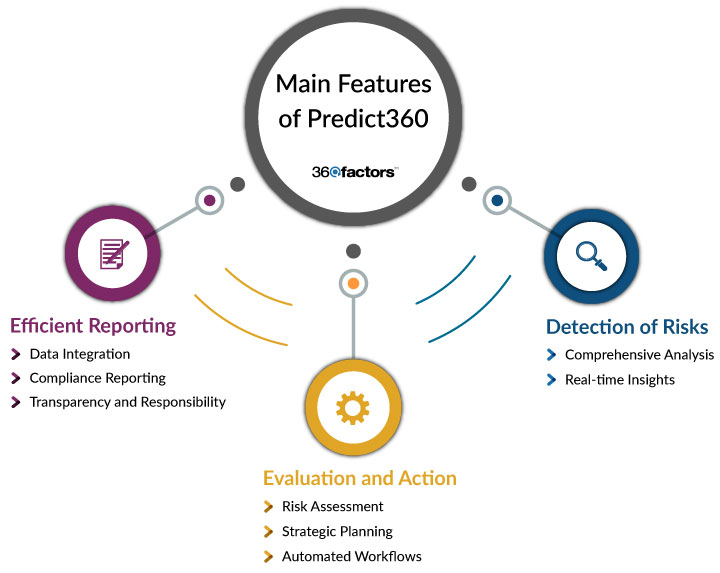Home/ Blog / Important Aspects of the CFPB Regulation Section 1071 Rule Compliance
In the ever-challenging world of financial regulation, one new rule is capturing attention and making waves for financial enterprises: Section 1071 of the Dodd-Frank Wall Street Reform and Consumer Protection Act.
But what story revolves behind this numerical title, and why is it grabbing the attention of industrial institutions?
This new proposed CFPB regulations, section 1071 rule, promises a secured future where small business lending would be equitable, fair, and transparent. It promises a time when financial enterprises will be held accountable for ensuring that every small business, regardless of ownership, has a fair shot at success.
As we stand on the edge of a new era in the financial regulatory world, section 1071 provides guidelines and a bold statement from the regulators and their commitment to fairness and structure toward a more inclusive economic landscape.
This blog will summarize the proposed critical CFPB regulation section 1071 changes, their requisite data components, and the suggested execution timeline for financial enterprises. We will also discuss how advanced risk and compliance software and apps strengthen financial institutions to leverage regulatory changes with agility and confidence.
Summary of Key Changes
The Dodd-Frank Wall Street Reform and Consumer Finance Protection Bureau have introduced a new rule, section 1071, which offers significant changes in the financial environment, improving small business lending practices. The CFPB has been working on the final rule notice since September 2021, and financial institutions are now getting ready to implement this act.
The Notice of Proposed Rulemaking (NPRM) establishes CFPB regulation section 1071 as a new subpart to the ECOA regulation B to execute its requirement. This will apply to all the covered financial institutions engaged in small business lending and improve lending practices, particularly for minority-owned and women-owned businesses. This new rule will create the first comprehensive database of small business credit applications in the US, enabling regulators to detect and address the unequal lending issues associated with small businesses.
Consumer Financial Protection Bureau Section 1071 revised ECOA to demand that financial organizations compile data, proceed with specific business credit applications, and report to the CFPB. Some new data point specifications have been created by the CFPB regulation for the collection and reporting of the data to fulfill the Section 1071 requirement.
There are additional requirements for financial enterprises concerning information compiled under section 1071, including the demand that financial enterprises should restrict non-authorized person’s access to specific information and the need to store certain information and requirements associated with data reporting and publication. Section 1071 specifies several data points financial institutions must report and gives authority to the CFPB to ask financial institutions to report additional data points that the CFPB determines would fulfill CFPB regulation Section 1071’s purposes.
Undoubtedly, the proposed changes demand a significant transformation effort across procedures, people, and technical tools. Financial organizations may need to improve existing data models, change business procedures, establish new controls, and integrate risk management frameworks to remain compliant and ensure responsible banking.
The Data Elements Financial Institutions Collect and Report
The Consumer Financial Protection Bureau’s final rule makes it mandatory for financial enterprises to collect and report the data points in the comprehensive listing of over 20 data points. They must also provide supplemental data elements that the financial enterprises would collect and report on when lending to small businesses owned by women and minority groups.
The financial enterprises’ data elements for this CFPB regulation comprise unique identifiers for the covered application, including application method, recipient, and date. Any action the lender takes regarding the application and its rationale for the decision should also be included. The denial reason data point would be needed if the application is rejected. If the application is approved, the data points associated with the pricing information will be required.
The application’s data elements might provide data points that could be controlled by reviewing the information collected from the applicant for the respective CFPB regulation. This comprises information about the credit’s eligibility and pertinent details about the applicant’s enterprise.
Data points are associated with the demographics of the principal business owners, whether the business is owned by a woman or someone with a minority background. This includes data about the applicant’s race, gender, and ethnicity. The financial lending organization is expected to request such applicant information.
There is an expectation for financial lending organizations to have security protocols. Processes to collect applicant data must be CFPB-compliant and they should restrict public access to private data given in the application. This CFPB regulation also outlines the consumer finance protection bureau’s plan to allow the submission of the data findings and its availability to the public every year.
Regulation Implementation Timeline
The execution of the Dodd-Frank Rule section 1071 is a complicated procedure that needs careful planning and adherence to specific deadlines. Here is a broad overview of the regulation implementation timeline concentrating on the collection and reporting needs.
Compliance Date Tiers
The compliance dates are graded according to the volume of covered originations from a financial institution in particular years. On top of that, the financial organization must be classified as a “covered financial institution” for the applicable year to be eligible for this CFPB regulation.
October 1, 2024, Compliance Date
- If a financial institution generated at least 2,500 covered origins in 2022 and 2023, it must start gathering data and adhering to the final rule on this date.
April 1, 2025, Compliance Date
Beginning on this date, a financial institution must start collecting data and complying with the CFPB compliance regulation’s final rule if it:
- Created at least 500 covered originations in both 2022 and 2023.
- Did not create 2,500 or more covered originations in both 2022 and 2023.
- Created at least 100 covered originations in 2024.
Financial lenders will become eligible for this CFPB regulation if they meet any of the 3 criteria above.
January 1, 2026, Compliance Date
A financial organization must begin collecting data and complying with the final rule on this date if it:
- At least 100 covered originations originated in both 2024 and 2025.
- Only initiated at least 500 covered originations in both 2022 and 2023.
Final Thoughts
The implementation of rule section 1071 is more than just a regulatory update; it is an essential step towards an equitable, transparent, and responsible financial environment. The waves of fairness, innovation, and vigilance, such as updates for CFPB regulations, are set to revamp how financial enterprises collaborate with small businesses, especially those owned by women and minorities.
A wonderful opportunity or change demands greater responsibility. The clock is ticking, and the timelines have been identified. Financial enterprises must learn to adapt and thrive in this new landscape, transforming compliance into an opportunity for excellence, growth, and trust.
With incredible tools like Predict360 Risk and Compliance software, the path to regulatory change management becomes easier to travel. Platforms like Predict360 enable financial enterprises to identify, evaluate and act on existing and current fair lending risks and metrics to adhere to CFPB regulations.

Let us roll up our sleeves and adopt this fantastic tool to ease our journey of implementing section 1071. Here are some of the main features of Predict360 that facilitate 1071 rule compliance:
1. Detection of Risks
Comprehensive Analysis: Predict360 offers a robust platform enabling FIs to analyze new and existing fair lending risks comprehensively.
Real-time Insights: With real-time insights, financial institutions can quickly identify potential areas of concern and take proactive measures.
2. Evaluation and Action
Risk Assessment: Predict360’s advanced algorithms categorize the identified risks based on severity and likelihood.
Strategic Planning: The software aids in developing strategic plans to address identified risks, ensuring alignment with CFPB regulation Section 1071 requirements.
Automated Workflows: Automated workflows streamline the compliance process, making it easier for financial institutions to implement necessary controls.
3. Efficient Reporting
Data Integration: Predict360 can integrate with existing data collection systems, efficiently collecting and managing the required data points.
Compliance Reporting: The platform offers tailored reporting capabilities, ensuring that financial institutions meet the specific reporting requirements of Section 1071.
Transparency and Responsibility: Predict360 Risk and Compliance system fosters accountability and supports regulatory oversight through transparent reporting.
Request a Demo
Complete the form below and our business team will be in touch to schedule a product demo.
By clicking ‘SUBMIT’ you agree to our Privacy Policy.



